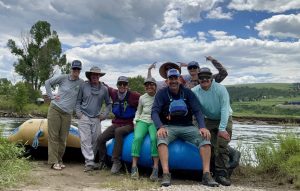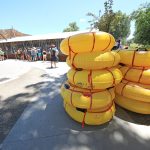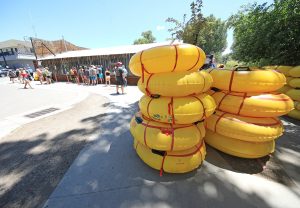Citizen scientists invited to help with pika patrol
Thursday morning outings with Yampatika search for pika
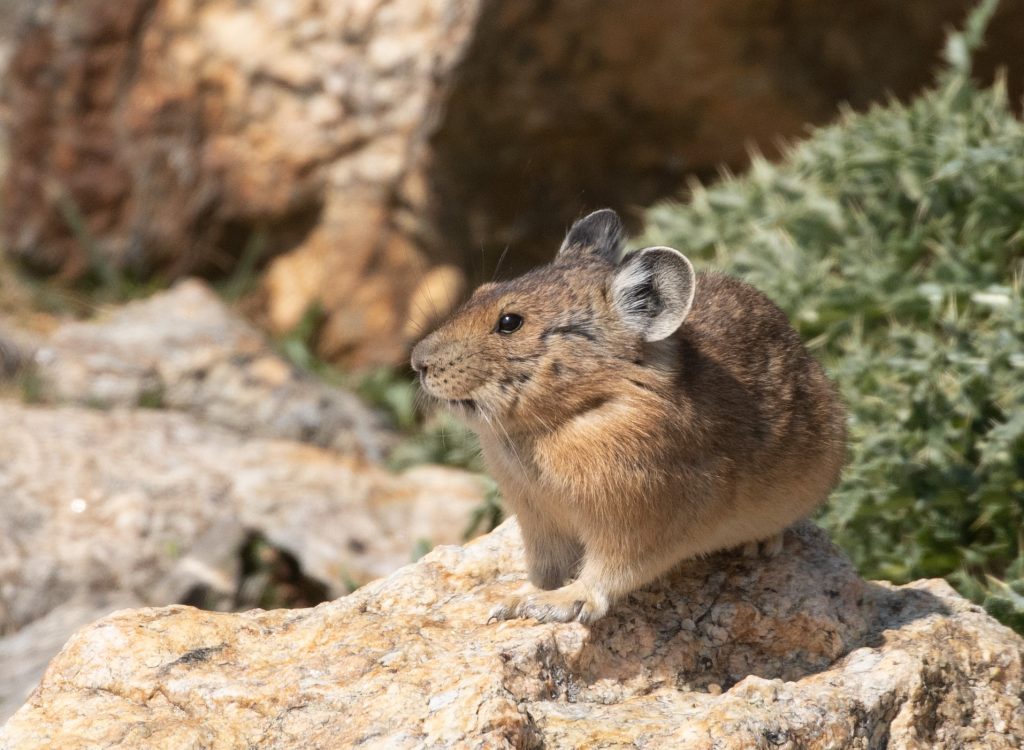
Jeremiah Psiropoulos/Courtesy photo
A new kind of patrol has been dispatched on a search mission at Steamboat Resort – the Pika Patrol.
The new Pika and Petal Patrol program hosted in July and August by environmental nonprofit Yampatika is a citizen science effort to study and document American pika that are considered a climate change indicator species nationally by wildlife biologists, said Hailey Shoptaugh, Yampatika adult and community programs manager. American pika also are classified in Colorado with the protection status “state special concern.”
On the Yampatika tours, a small group of wildlife enthusiasts start with education and look for pika through passive listening and watching, followed by active searching for evidence such as food haypiles and scat piles, Shoptaugh explained.
The idea for the tour started more than a year ago when Shoptaugh and former U.S. Forest Service Wildlife Biologist Jeremiah Psiropoulos were pondering the small population of American pika found in a rock slide area near Fish Creek Falls.
“We were marveling at their ability to establish such a low-elevation colony and the need for people to study these populations,” Shoptaugh said. “It’s been encouraging to see them use this below-treeline habitat because it indicates pika could hopefully adapt to this new climate change world.”
Yampatika has a permit and contract with Steamboat Resort that includes a requirement for the nonprofit to provide programming on the resort grounds. The summer pika program is similar to the ongoing Community Science After Dark program during the winter where Yampatika-led groups look for owls at the resort.
“We are collecting data for the Forest Service and getting the public involved to hopefully get them excited about pika too,” Shoptaugh said.
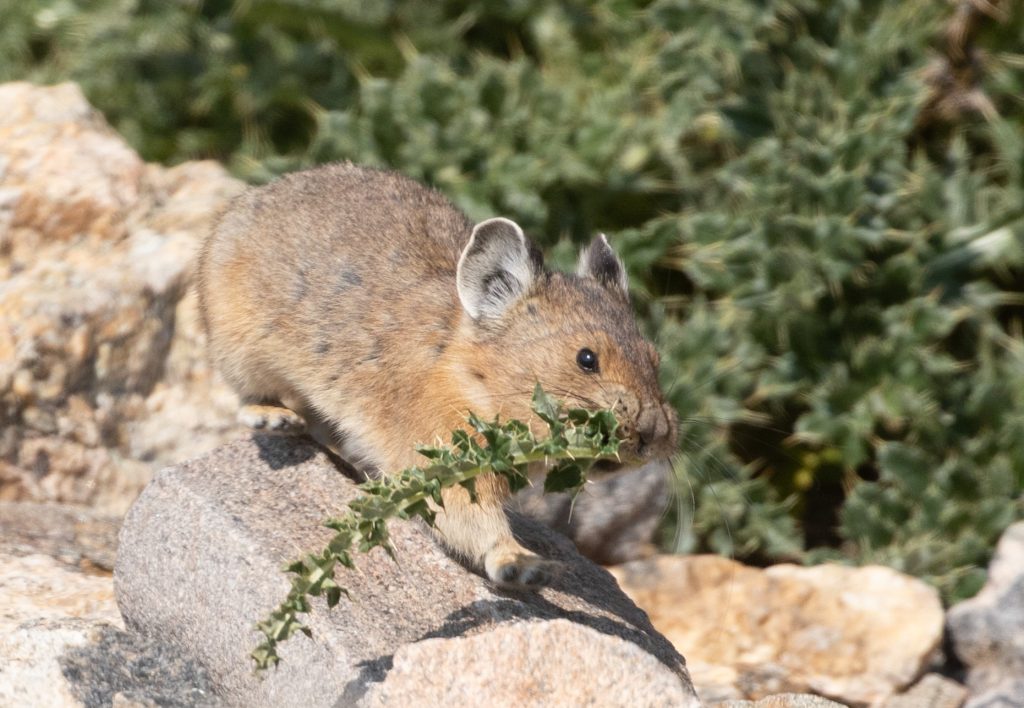
The Yampatika biologist said American pika are being negatively impacted by climate change issues of too much heat, too little snow and treelines increasing in elevation.
“Pika are primarily found in talus areas above the treeline,” Shoptaugh explained. “As our treeline increases in altitude due to our changing climate, this habitat is disappearing. It is important for us to understand the lower-elevation populations in our state, like those at the Steamboat Resort, which exist in rock fields below the treeline.”
American pika are susceptible to heat stress.
“Anything above 77 degrees Fahrenheit could trigger heat stroke for the fuzzy little lagomorphs,” Shoptaugh said.
As snowfall amounts decrease, so does the insulating power of the snow, thus exposing pika to the risk of freezing because the small animals do not hibernate in the winter.
“Instead, they remain active in a temporary habitat called the subnivean zone,” Shoptaugh said. “The snow above them acts as an insulating layer, keeping the environment a little above freezing while they scurry along the rock fields.”
According to Colorado Parks & Wildlife, pika are about the size and shape of a guinea pig reaching about 8 inches long and weighing about 7 ounces. Pika are a close relative of rabbits and hares, and since they are rock-gray in color, pikas are seldom seen until their shrill warning call reveals their presence.
Yampatika leaders added a plant survey to the patrols because as high-altitude plant populations are changing, wildlife such as herbivorous pika have to adapt. During the patrols, the groups conduct a Nature’s Notebook plant survey.
“Changes in the timing of plants and the availability of their food are another potential climate change-driven risk they face,” the biologist explained.
On the second patrol outing, the group was excited to document two pikas along with their food piles hidden under rocks and piles of scat, with each piece of scat about the size of a peppercorn.
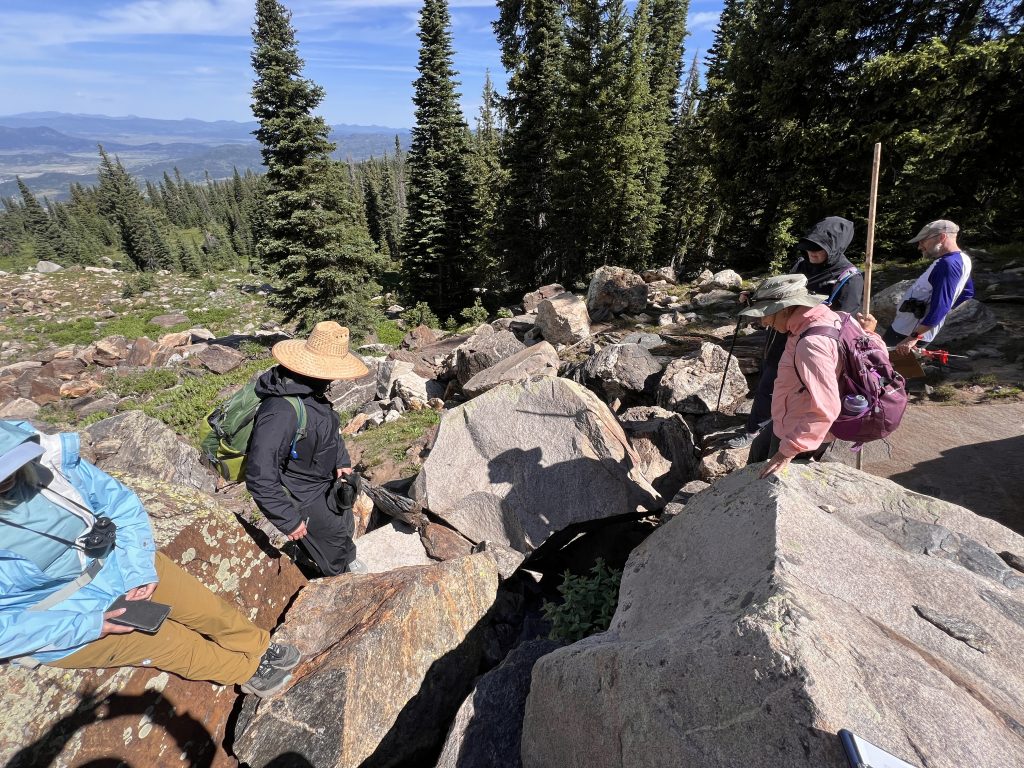
Required reservations for the Pika and Petal Patrol are available online at Yampatika.org under the Summer Guided Tours link. The free tours for participants age 14 and older start at 7:45 a.m. Thursdays through the end of August from the Thunderhead Lift parking area.
Citizens interested in documenting pika in Colorado who cannot attend a Yampatika tour can also get involved as citizen scientists through the Colorado Pika Project, including an app at Pikapartners.org.
“Through long-term monitoring of pika populations, we are not only providing useful data to researchers and land managers, but we are doing so in a way that educates and engages Coloradans in conservation and the local impacts of climate change,” according to the Colorado Pika Project, which is led by the Denver Zoo Conservation Alliance and Rocky Mountain Wild.
Shoptaugh said a good place to see pika in Routt County is in open rock talus habitat areas with dispersed wildflowers such as in the Zirkel Circle hiking area.
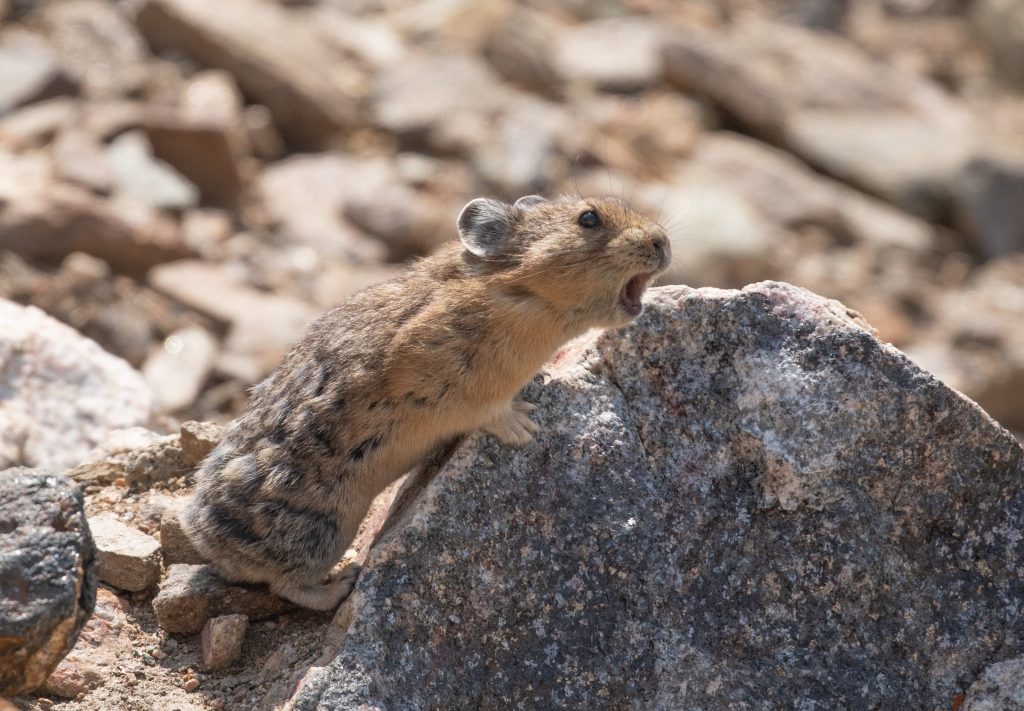
To reach Suzie Romig, call 970-871-4205 or email sromig@SteamboatPilot.com.

Support Local Journalism

Support Local Journalism
Readers around Steamboat and Routt County make the Steamboat Pilot & Today’s work possible. Your financial contribution supports our efforts to deliver quality, locally relevant journalism.
Now more than ever, your support is critical to help us keep our community informed about the evolving coronavirus pandemic and the impact it is having locally. Every contribution, however large or small, will make a difference.
Each donation will be used exclusively for the development and creation of increased news coverage.

